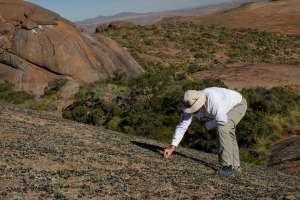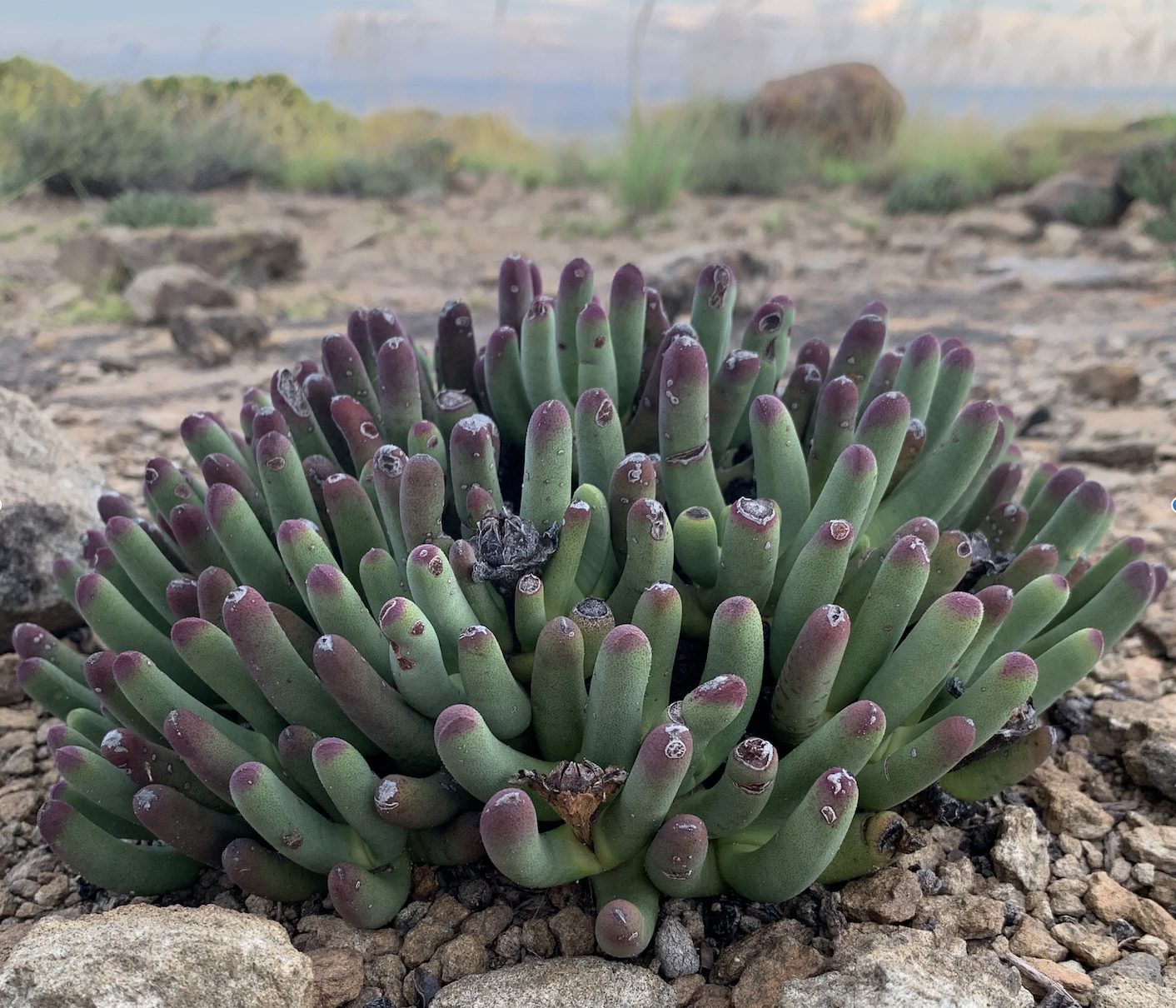Most people are aware of illegal poaching and trading in elephant ivory or rhino horn from Africa, but few are aware of illegal succulent plant poaching. South Africa is home to three of the world’s 36 biodiversity hotspots including the Nama Karoo, one of the world’s most biodiverse arid regions, with many of its species occurring nowhere else on Earth. It has the planet’s largest concentration of succulent plants, all of which grow in desert like conditions and are critical for pollination, soil health, and supporting the biome. Some of these succulents have medicinal properties and others can absorb unusually high amounts of CO2. Sadly, many of the Nama Karoo’s succulent plant species have been recently added to the International Union for the Conservation of Nature’s (IUCN) Red List of Threatened Species and are classified as decreasing/near threatened to critically endangered (one step away from extinction in the wild).
Succulents grow in naturally extreme conditions. While they come in unique shapes and sizes, the majority are small, have shallow roots which are easily uprooted, and store water which allows them to last without it for long periods. These characteristics make them easy to pick, transport and highly tradable. These endangered plants have long been illegally poached and sold into Asia, Europe and the United States, often through crime syndicates, to collectors desiring the unusual, or people wanting them for their health and well-being. However, during COVID these numbers grew exponentially as more and more people around the world discovered and purchased succulents to decorate their homes, and succulent plant collectors demanded increasingly rarer and unusual species. The illegal succulent trade is now a dire threat to this biodiverse region, and the South African police and local environmental organizations are doing their best to curtail their activities, but there needs to be more interest and focus on this problem.
My interest in this critical and pressing issue stems from my South African family roots in the Karoo and my passion for conservation. My goal with this project is to build awareness of these rare and beautiful plants’ importance and their risk of extinction through my photographs. I’m working with James Fisk, a South African horticulturalist, who is cataloging a list of rare and endangered succulents in a mountain range in the Nama Karoo. Over the last month, I’ve been doing my own research of the succulents I hope to find and photograph there. Since poachers often track these succulents through the GPS coordinates in the metadata of photos taken and posted online, my photos will be untraceable but recognizable to the locals who may have come across these species in the bush. I’ll create a digital portfolio which I hope to share with an environmental organization who is already tackling this issue, and also more broadly online, to raise public awareness of the need to protect these succulent plants from poaching and extinction. In the upcoming year, I also plan to exhibit a print portfolio of these succulents at Deerfield. In both, I will include their scientific and common names and why they are valuable and important for the environment, as well as why they are being illegally poached. Too many succulent plant species have already been lost, and once lost, the biodiversity of the region and the biome will have been irreversibly damaged.



-Alex ’24

